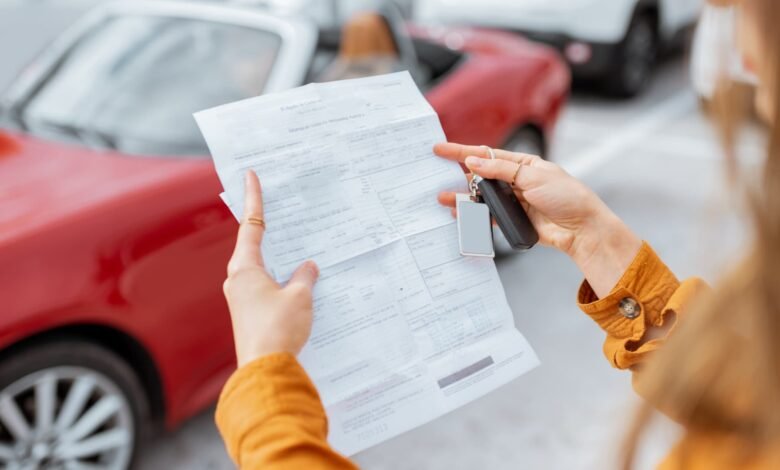
Leasing a car has become an increasingly popular option for drivers who want to drive a new vehicle without buying one. A car lease offers lower monthly payments compared to financing a car purchase. Leasing also allows you to drive a more expensive, luxury vehicle that may be out of your price range to buy.
How Does Car Leasing Work?
With a car lease, you essentially rent the vehicle from a leasing company. You make monthly payments over a contract term, usually 24 to 36 months. Once the lease ends, you return the car to the leasing company. You do not own the vehicle at the end of the lease.
Choosing not to lease a car means opting for a different approach than a car loan. Unlike a loan where you borrow money to purchase the car and make payments until you fully own it, not leasing involves forgoing the rental arrangement. Instead of renting the car for a fixed period and returning it, you would be pursuing alternative financing methods. This decision avoids paying for the vehicle’s depreciation during the lease term, along with associated fees and interest.
Car Lease Advantages
Here are some of the main benefits of leasing a car:
- Lower monthly payments – Since you only pay for the vehicle’s depreciation, monthly payments are usually lower compared to financing a purchase. This allows you to drive a more premium vehicle for less.
- No down payment – Most leases do not require a down payment like financing does. However, you may have to pay first month’s payment plus taxes and fees at signing.
- Predictable costs – Lease payments are fixed for the term so you can easily budget for the expense.
- No long-term commitment – Typical lease terms are 2-3 years. This allows more flexibility to change vehicles compared to buying.
- Newer vehicles – Leasing mostly applies to new vehicles so you can drive the latest models.
- Warranty coverage – New vehicles come with factory warranties which make repairs free during the lease.
- No hassle selling or trading in – With a lease, you simply return the car at lease-end. No need to worry about selling or trading it in yourself.
Car Lease Disadvantages
Here are some potential downsides of car leasing:
- Mileage limits – Most leases limit the annual mileage, usually to 12,000 or 15,000 miles. Exceeding the limit results in mileage fees.
- Wear and tear fees – You may be charged for excess wear and damage when returning the vehicle. It’s important to keep it in good condition.
- No equity – You don’t build any ownership equity like when financing a purchase. All payments go toward the vehicle’s depreciation.
- Early termination penalties – Breaking a lease usually incurs early termination fees. It’s difficult to get out of a lease if your situation changes.
- Excessive mileage penalties – Going over the annual mileage limit results in charges of around 20-30 cents per mile. This can add up.
- Disposition fee at turn-in – You will likely have to pay a disposition fee when you return the vehicle at the end of the lease term.
- Lack of customization – Since you don’t own the vehicle, you may be restricted on customizations and modifications.
How to Get the Best Car Lease Deal
If you’ve decided that leasing is the right option for you, here are some tips to help you find the best lease deal:
- Consider lease incentives and special offers – Manufacturers and dealers sometimes offer discounted lease rates or cash incentives for signing a lease. Look for special lease deals that can lower your payments.
- Lease at the end of model year – Late summer and fall are good times to lease as dealerships want to clear outgoing model year vehicles for newer ones. You can take advantage of better pricing.
- Lease a slowly depreciating vehicle – Models that hold their value well mean lower depreciation charges passed on to you during a lease. SUVs and trucks often depreciate slower.
- Put down a down payment – A bigger down payment reduces your monthly payment by lowering the leased amount. But avoid overpaying upfront.
- Keep the lease term shorter – Opt for a 24 or 36 month term. With less time, there’s less depreciation charged to you.
- Keep mileage low – Negotiate a lower annual mileage limit if possible to avoid excess mileage fees.
- Skip add-ons and fees – Reject extras like maintenance plans and appearance protection packages which increase monthly payments.
- Compare lease quotes – Get lease quotes from different dealers to find the best deal. Third-party car lease brokers can also help find offers.
Steps to Take When Turning In a Leased Car
Returning your leased car at the end of the term requires the following steps:
- Review your lease agreement and ensure you won’t incur any excess wear, mileage, or disposition fees.
- Thoroughly clean the vehicle inside and out. Make any needed repairs. This prevents cleanup charges from the leasing company.
- Gather all maintenance records, ownership documents, manuals, and spare keys to return with the vehicle.
- Schedule an inspection appointment with the leasing company to review the vehicle’s condition before the turn-in date. This gives you time to address any issues.
- On the turn-in date, return the car to the designated facility. Have the leasing agent note the vehicle’s odometer reading. Turn in keys, documents, etc.
- Pay any remaining official fees for excess mileage, wear and tear deductions, or termination fees. Make sure to obtain a final receipt.
- Cancel any automatic payments if you aren’t leasing another vehicle from the company.
- Obtain documentation that shows you turned in the vehicle. This proves you are no longer legally and financially responsible.
Properly turning in your leased vehicle ends your obligations and prevents any surprise charges down the road.
Frequently Asked Questions About Car Leasing
Here are answers to some common questions about leasing a car:
How much do monthly lease payments cost?
Monthly payments vary greatly based on the vehicle, lease terms, mileage, etc. but generally range from $200-$600 for most models. High-end luxury cars may exceed $1,000 per month.
Do I pay sales tax when leasing a car?
Yes, state and local sales tax applies to a leased vehicle, just like a purchase. Tax is usually paid upfront rather than spread into the monthly payments.
What credit score do I need to lease a car?
Lease approval often requires very good credit, around 700-750+ FICO score. Some companies may approve scores in the 660s but offer less favorable terms. If your score is lower, you may need a co-signer.
Should I buy or lease my next car?
Consider leasing if you want lower payments on a nicer vehicle, like to frequently change cars, drive less than 15,000 miles annually, or don’t want long-term ownership. Buying has advantages if you put lots of miles on a car, like customization, and want to build equity.
Can I end my car lease early?
You can terminate a lease early but will face an early termination fee, usually several hundred dollars. Transferring a lease to another person is an alternative but also comes with a transfer fee. Defaulting on a lease can severely damage credit.
What is the cheapest car to lease with no money down?
Among mainstream brands, compact cars and small SUVs like the Honda Civic, Nissan Rogue, Toyota RAV4, and Subaru Forester offer some of the lowest lease payments with $0 down. But incentives vary monthly, so research current lease deals for best pricing.
Leasing a car can offer many benefits like lower monthly payments and flexibility. But it’s important to carefully compare lease terms versus purchasing. Make sure you understand all aspects of a lease agreement before signing to avoid surprises down the road. With good planning, leasing can be an affordable way to drive the car you want.

